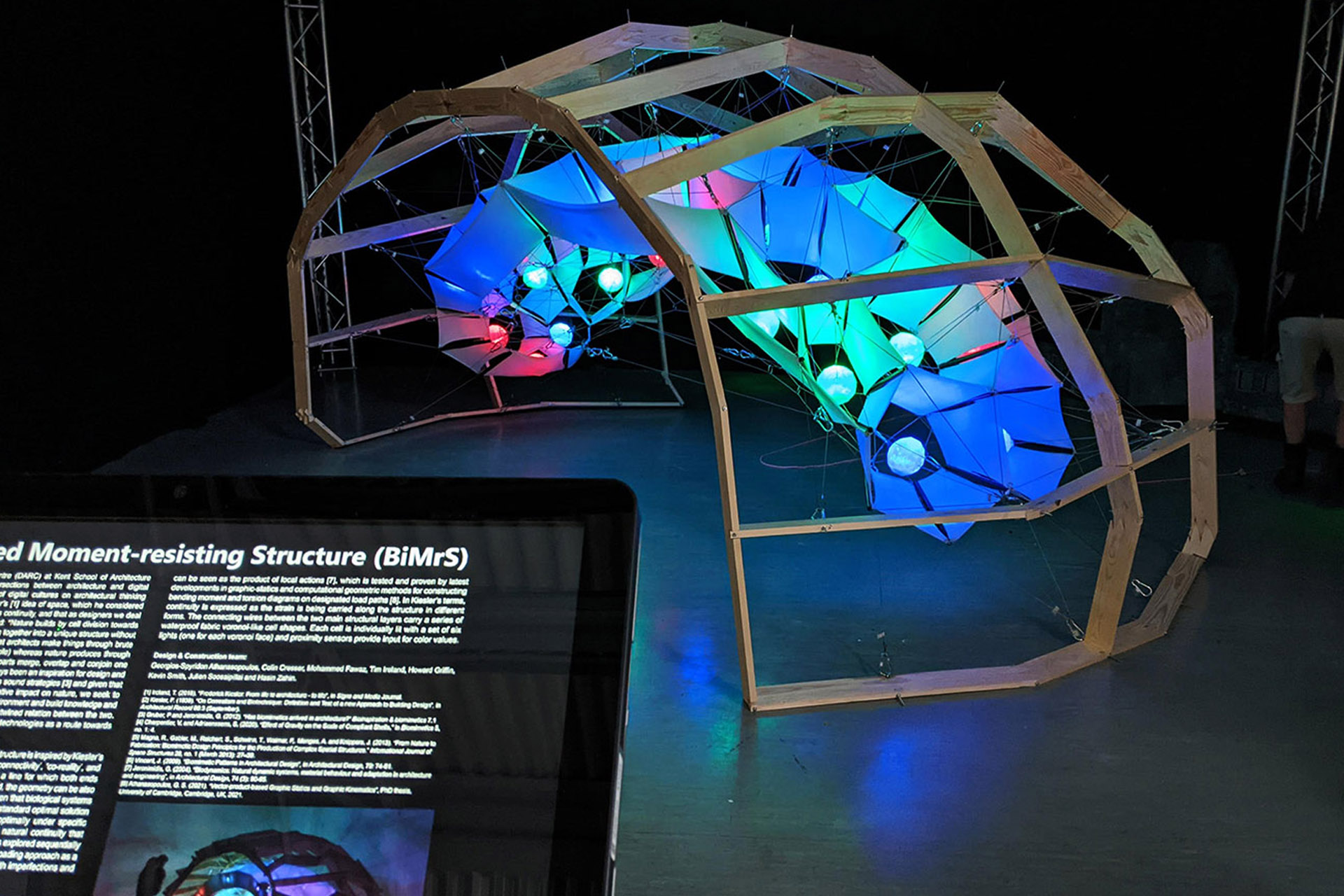Staff and students from the University of Kent are looking forward to participating in the Medway Rapture Gaming and Creative Festival on 3 and 4 July 2021.
Taking place at the Historic Dockyard Chatham, the Festival, whose core theme is Medway Creative, will demonstrate the wealth of regional opportunity in creative arts, science, engineering, technology and video game creation.
Kent School of Architecture and Planning’s Digital Architecture Research Centre (DARC) will be contributing two features at the festival. The first: show reels of the School’s digital programmes of MA Architectural Visualisation (MAAV) and MSc Bio Digital Architecture (MBDA), demonstrating how architecture skills can be applied throughout sectors, particularly in digital arts. A 2.5 metre long model of Rochester Castle’s wall will also be present as a target for a display of projection mapping. This will involve a light display being projected onto the scale model, featuring unique designs of student work that give the impression of the building being in motion.
Secondly, DARC have explored the intersections between architecture and digital technologies to investigate the impact of digital cultures on architectural thinking and practice. Instigated as a student design ideas competition, DARC’s ‘Structure on the Edge’ in their competition entry to the International Association for Shell and space Structures (IASS) Competition.
Director of Digital Architecture Dr Tim Ireland says, “Structure on the Edge is inspired by Kiesler’s Endless House where he expresses concepts such as ‘connectivity’, ‘co-reality’, and ‘biotechnique’ and the notion of continuity – in a form of a line for which both ends meet. The proposed design is an expression of natural continuity that blends with the architectural brute force and intentionally strain is explored sequentially in all of its forms (axial, shear, bending, torsion). This combined loading approach as a design decision is achieved through a nature-inspired scheme with imperfections and asymmetries resulting in a structure in state of self-stress.
The structure consists of an outer layer of birch plywood members pulled inwards with wire-ropes. Rope ends connect at a triangulated mesh of wires in tension. The internal mesh is being stressed at the end of the assembly by pulling its four ends (two continuous wire-rope windings) that then pulls the outer thirty-eight cables connecting to the beams. Force is carried through a combination of bending and torsion in the outer beams and through pure tension in the wires.
Design and Construction team
Georgios-Spyridon Athanasopoulos, Colin Cresser, Mohammed Fawaz, Tim Ireland, Howard Griffin, Kevin Smith, Julien Soosaipillai and Hasin Zahin.

